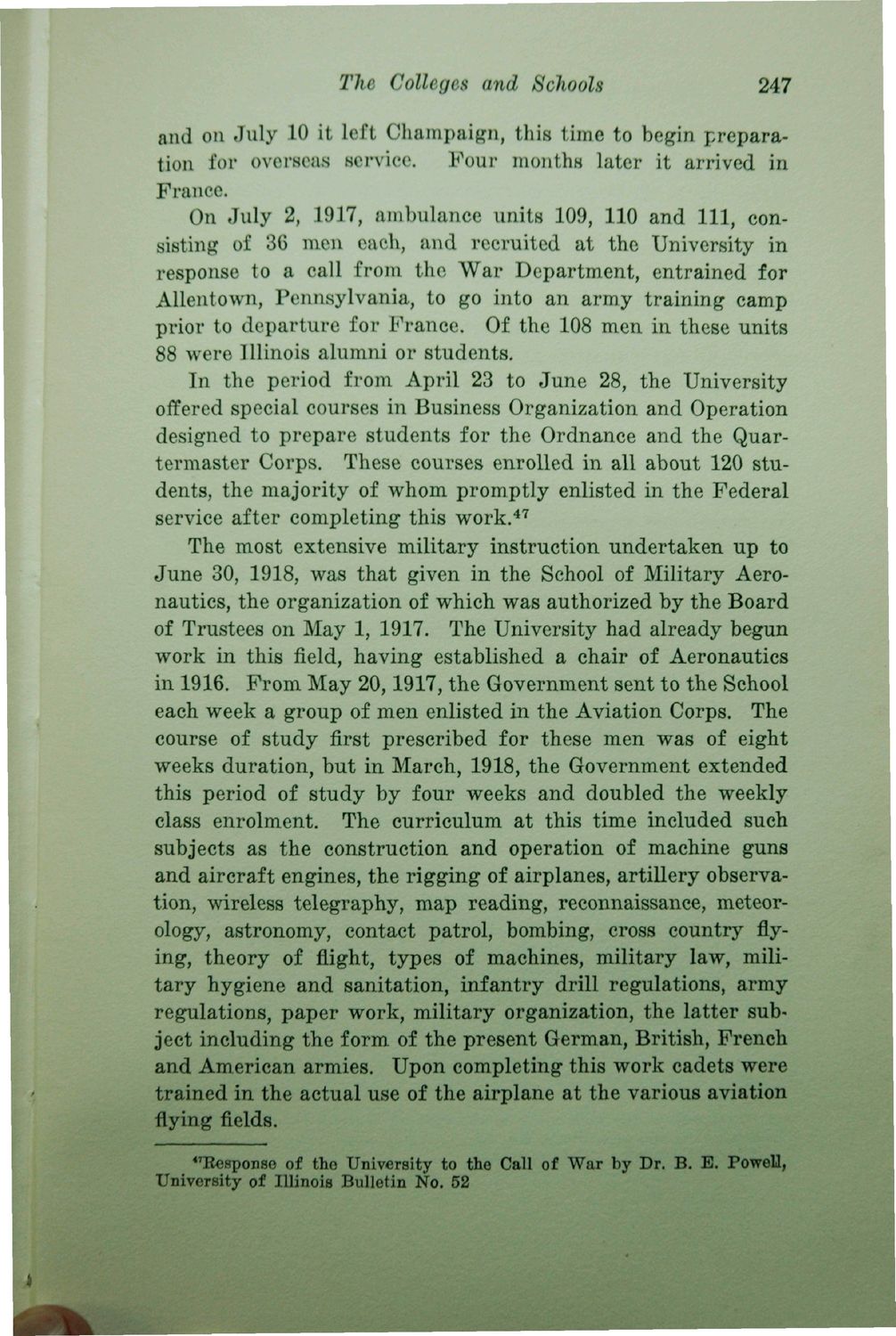| |
| |
Caption: Book - 16 Years (Edmund James)
This is a reduced-resolution page image for fast online browsing.

EXTRACTED TEXT FROM PAGE:
The Colleges and Schools 247 and on July 10 it left Champaign, this time to begin preparation for overseas service. Pour months later it arrived in Prance, On July 2, 1917, ambulance units 109, 110 and 111, consisting of 36 men each, and recruited at the University in response to a call from the War Department, entrained for Allentown, Pennsylvania, to go into an army training camp prior to departure for France. Of the 108 men in these units 88 were Illinois alumni or students. In the period from April 23 to June 28, the University offered special courses in Business Organization and Operation designed to prepare students for the Ordnance and the Quartermaster Corps. These courses enrolled in all about 120 students, the majority of whom promptly enlisted in the Federal service after completing this work.47 The most extensive military instruction undertaken up to June 30, 1918, was that given in the School of Military Aeronautics, the organization of which was authorized by the Board of Trustees on May 1, 1917. The University had already begun work in this field, having established a chair of Aeronautics in 1916. Prom May 20,1917, the Government sent to the School each week a group of men enlisted in the Aviation Corps. The course of study first prescribed for these men was of eight weeks duration, but in March, 1918, the Government extended this period of study by four weeks and doubled the weekly class enrolment. The curriculum at this time included such subjects as the construction and operation of machine guns and aircraft engines, the rigging of airplanes, artillery observation, wireless telegraphy, map reading, reconnaissance, meteorology, astronomy, contact patrol, bombing, cross country flying, theory of flight, types of machines, military law, military hygiene and sanitation, infantry drill regulations, army regulations, paper work, military organization, the latter subject including the form of the present German, British, French and American armies. Upon completing this work cadets were trained in the actual use of the airplane at the various aviation flying fields. "Kesponse of the University to the Call of War by Dr. B. B. Powell, University of Illinois Bulletin No. 52
| |